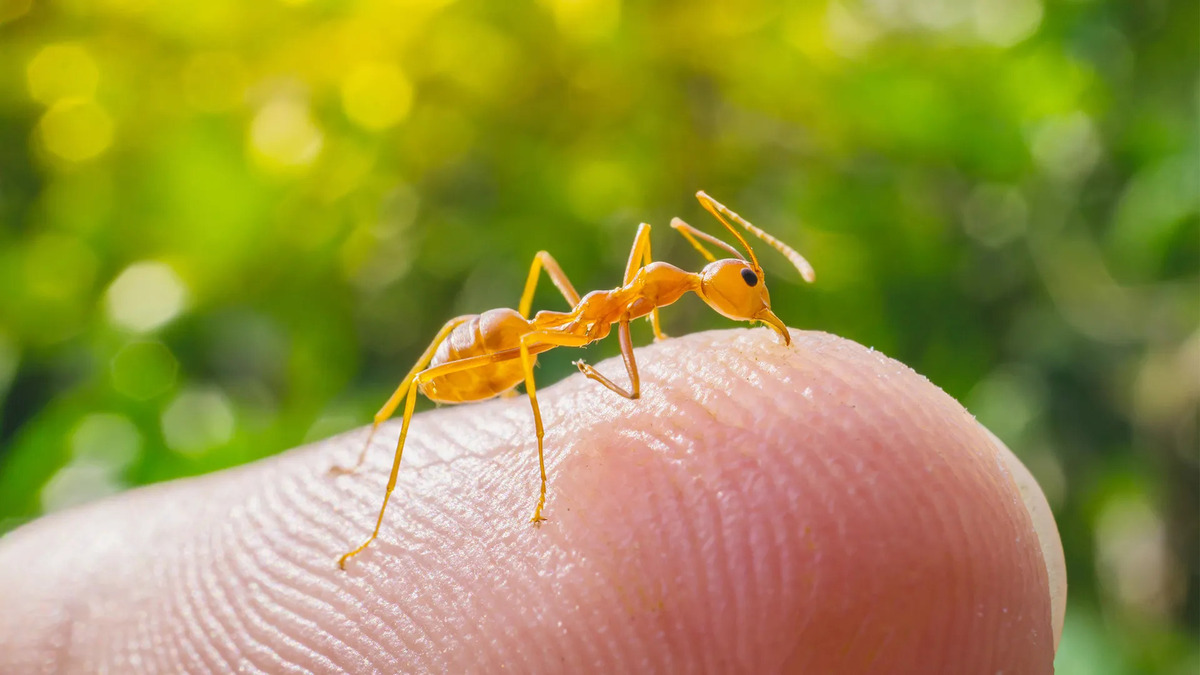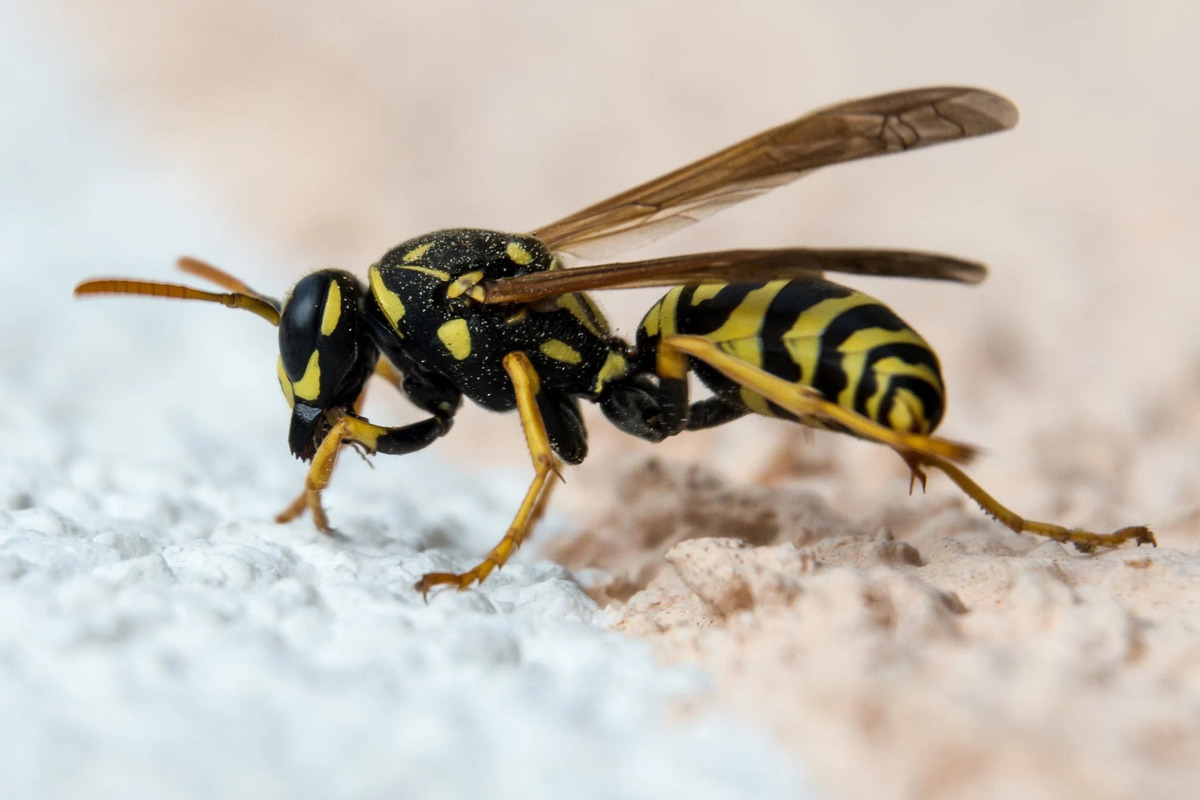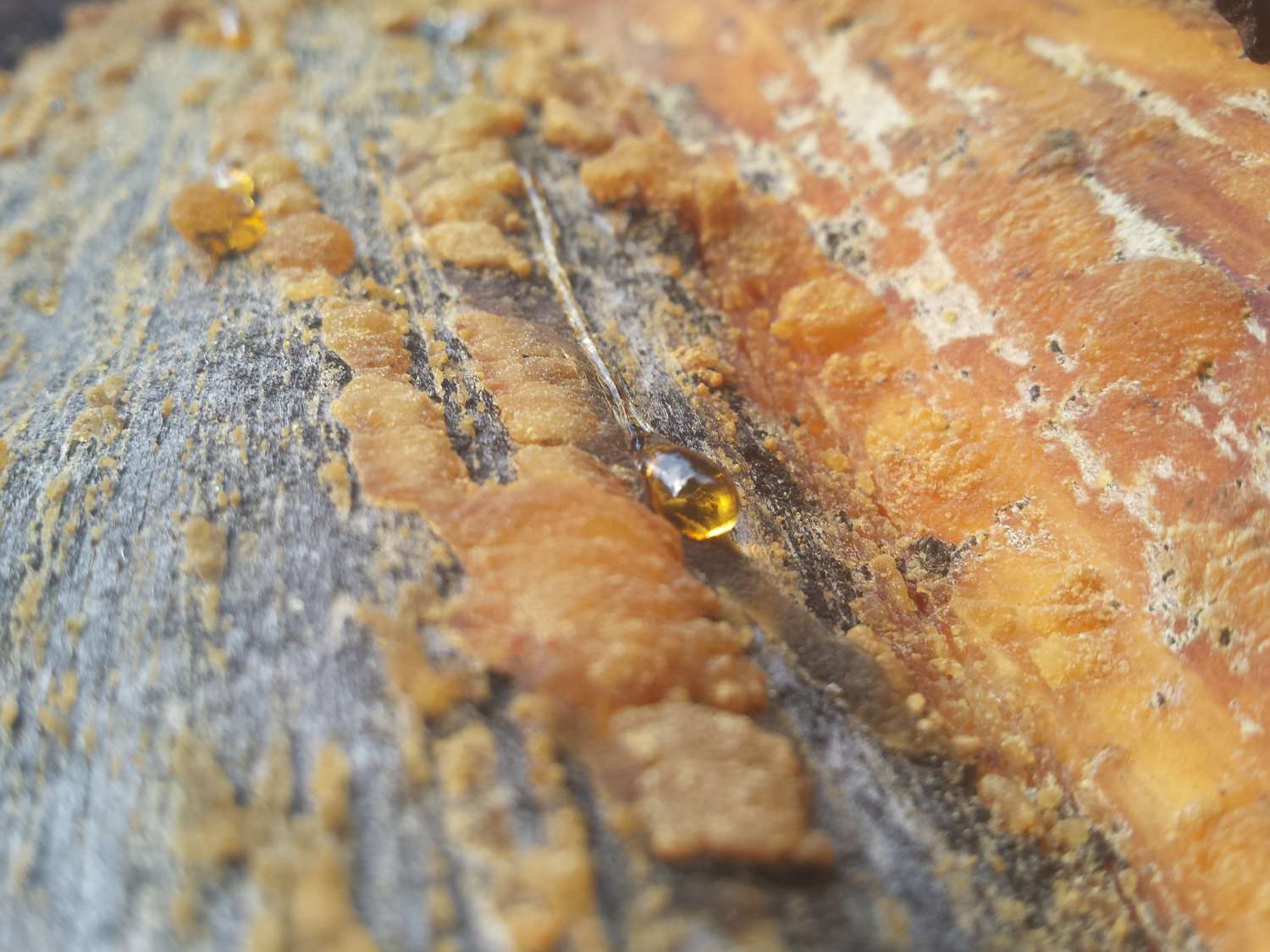Home>Gardening News and Trends>Latest News>Which Organ Do Insects Not Have


Latest News
Which Organ Do Insects Not Have
Modified: January 22, 2024
Discover the latest news on insect anatomy. Find out which organ insects do not have in this informative article.
(Many of the links in this article redirect to a specific reviewed product. Your purchase of these products through affiliate links helps to generate commission for Chicagolandgardening.com, at no extra cost. Learn more)
Table of Contents
Introduction
Insects are fascinating creatures that have adapted to various environments and display a remarkable diversity of species. One intriguing aspect of their anatomy is their internal organ systems. While insects share some similarities with vertebrates in terms of their organ systems, there are also significant differences.
In this article, we will explore the different organ systems found in insects and highlight one particular organ that they do not possess. Understanding these unique adaptations can help us appreciate the complexity and resilience of these tiny creatures.
From their outer appearance to their internal workings, insects have evolved solutions for survival that are both efficient and effective. Their organs work in harmony to carry out vital functions and ensure their species’ continuation.
By delving into the intricacies of insect anatomy, we can shed light on the fascinating world of these small but remarkable creatures. So, let us dive deeper into the internal organs of insects and discover which organ they lack.
Skin and Exoskeleton
One of the defining features of insects is their exoskeleton, also known as their exoskeletal or cuticular covering. This external skeleton provides support and protection for the insect’s body. Unlike the internal skeletons of vertebrates, insects have their skeletal structure on the outside.
The exoskeleton is composed of a tough, flexible material called chitin, which gives insects their characteristic strength and resilience. This exoskeleton acts as a barrier against predators, physical damage, and water loss. It also serves as a site for muscle attachment, allowing for efficient movement.
However, the exoskeleton poses a challenge for growth. As insects grow, their exoskeleton does not expand with them. Instead, they undergo a process called molting. During molting, the old exoskeleton is shed, and a new, larger exoskeleton is formed. This allows the insect to continue its growth without being restricted by its outer covering.
While the exoskeleton provides numerous advantages, it also imposes limitations on the size and flexibility of insects. Unlike animals with an internal skeletal system, insects have a relatively fixed body shape and limited mobility. They compensate for this by adapting their exoskeleton to suit their specialized needs, such as the hardened wing covers of beetles or the transparent wings of dragonflies.
It is important to note that the exoskeleton is not an organ in the traditional sense, but it is a crucial part of an insect’s body structure. By understanding how the exoskeleton functions and its role in the insect’s overall anatomy, we can appreciate the extraordinary adaptations that insects have developed to thrive in a variety of habitats.
Circulatory System
The circulatory system of insects is quite different from that of vertebrates. In insects, the circulatory system is open, meaning that their internal organs are bathed in a fluid called hemolymph instead of blood.
The hemolymph is not contained in vessels like our blood vessels but flows freely through open spaces known as sinuses. This system allows for the direct exchange of nutrients, waste products, and hormones between the hemolymph and the cells of the insect’s body.
The pumping mechanism in insects’ circulatory system is provided by the contraction of the heart, which is a long tube located along the insect’s back. The heart pumps the hemolymph forward, distributing it throughout the body.
Unlike vertebrates, insects do not have specialized respiratory organs such as lungs or gills. Instead, oxygen enters the insect’s body through tiny tubes called tracheae. These tracheae branch out into smaller tubes called tracheoles, which deliver oxygen directly to the cells.
The hemolymph also plays a role in the insect’s immune system. It contains various cells, including hemocytes, which are responsible for defending the insect against microbial infections.
The circulatory system of insects is a vital component of their overall physiology. It allows for the distribution of nutrients and oxygen, the removal of waste products, and the communication of chemical signals throughout their bodies.
Understanding the unique design and function of the circulatory system in insects gives us a deeper appreciation for their remarkable adaptation to different environments and their ability to thrive in diverse ecological niches.
Respiratory System
Insects have a highly efficient and specialized respiratory system designed for their small size and unique needs. Unlike humans and other vertebrates that rely on lungs for gas exchange, insects employ a network of tiny tubes called tracheae to deliver oxygen directly to their cells.
The tracheal system starts with small openings called spiracles, which are located along the insect’s exoskeleton. These spiracles allow air to enter the tracheae and distribute oxygen throughout the insect’s body.
From the spiracles, the tracheae branch out into smaller tubes called tracheoles. These tracheoles extend into every tissue and cell, ensuring that oxygen is delivered directly to where it’s needed.
Aside from oxygen uptake, the tracheal system also functions in the removal of carbon dioxide, a waste product of cellular respiration. As the cells produce carbon dioxide, it diffuses out of the cells and into the tracheoles, eventually making its way back to the spiracles for expulsion.
The respiratory system in insects is remarkably efficient, allowing for rapid gas exchange despite their small size. It also contributes to their ability to engage in activities that require high energy expenditure, such as flying.
It is worth noting that the tracheal system’s reliance on direct diffusion limits the size of insects. The smaller an insect is, the more effective this respiratory system becomes due to the shorter distance oxygen needs to travel.
By adapting to their surroundings and evolving a unique respiratory system, insects have successfully colonized nearly every habitat on Earth.
Understanding how insects breathe and exchange gases sheds light on their remarkable adaptations and highlights their incredible ability to survive and thrive in diverse environments.
Digestive System
The digestive system of insects is specifically designed to efficiently process a wide range of food sources. Insects have a complete digestive system, consisting of several organs that work together to break down food and absorb nutrients.
The journey of food begins in the insect’s mouthparts. Depending on the species, mouthparts can vary greatly and are adapted to the insect’s feeding habits. These mouthparts can be specialized for chewing, sucking, piercing, or lapping, allowing insects to feed on a variety of plant matter, nectar, blood, or other insects.
Once the food is ingested, it passes through the alimentary canal, which is a long tube that runs the length of the insect’s body. The alimentary canal consists of the foregut, midgut, and hindgut.
The foregut is responsible for initial food processing and storage. In some insects, such as bees, ants, and termites, the foregut can house a specialized compartment called a crop, which stores food before it is processed further.
The midgut is where most of the digestion and absorption of nutrients takes place. Enzymes secreted by cells in the midgut break down the food into simpler forms that can be readily absorbed by the insect’s body.
The hindgut acts as a final processing chamber, absorbing water and storing and eliminating waste products. It leads to the anus, where undigested materials, such as feces, are expelled from the insect’s body.
Interestingly, some insects have developed mutualistic relationships with microorganisms in their digestive system. These microorganisms help break down complex compounds such as cellulose and provide additional nutrients for the insect.
The efficient digestive system of insects allows them to extract maximum nutrition from various food sources and adapt to a diverse range of diets. Their ability to digest and utilize different food types contributes to their success as a highly adaptable and widespread group of organisms.
Nervous System
The nervous system of insects is remarkably complex and plays a critical role in their behavior, sensory perception, and coordination of bodily functions. While their nervous system does not possess a brain in the same way that vertebrates do, insects have evolved a network of interconnected nerve cells that efficiently process and transmit information.
Insects have a concentrated cluster of nerve cells called the brain or the supraesophageal ganglion. This structure is located in the head and serves as the control center for sensory processing and integration. While the insect brain is relatively small, it is capable of remarkable processing power and allows insects to exhibit complex behaviors.
From the brain, nerves extend throughout the insect’s body, forming a network of interconnected nerve cells. These nerves transmit signals between the brain and the various parts of the body, enabling coordinated movement and sensory perception.
In addition to the brain and nerves, insects possess specialized sensory organs that allow them to perceive their environment. These sensory organs can include compound eyes, which provide a wide field of vision, and antennae, which are highly sensitive to chemical signals, among others.
The nervous system also plays a role in regulating physiological functions in insects. For example, it helps control heart rate, coordination of muscle contractions, the secretion of hormones, and the adjustment of metabolism.
What is truly fascinating about the insect nervous system is how it serves as a model for the study of neural networks and behavior. The simplicity and efficiency of insect neural circuits have helped scientists gain insights into fundamental principles of information processing and behavioral responses.
Understanding the structure and function of the insect nervous system not only allows us to appreciate their remarkable sensory abilities and behaviors but also provides valuable insight into the intricate workings of the nervous systems of other organisms, including our own.
Muscular System
The muscular system in insects is responsible for their remarkable agility, movement, and control. Insects have a highly developed muscular system that enables them to perform a wide range of activities, from walking and flying to jumping and digging.
The muscles in insects are attached to the exoskeleton, allowing for efficient movement and manipulation. These muscles are mainly composed of striated fibers, similar to the muscles found in vertebrates. However, unlike vertebrates, insects do not have voluntary control over their muscles. Instead, their movements are controlled by a series of reflexes and neural signals.
One interesting aspect of the insect muscular system is its ability to generate rapid and powerful movements. Many insects can perform incredibly fast flight maneuvers or sudden jumps, thanks to the rapid contraction and relaxation of their muscles. This speed and efficiency allow them to evade predators, capture prey, or navigate their complex environments.
Additionally, insects have specialized muscles called indirect flight muscles, which power their wings. Insects can beat their wings at high frequencies, enabling them to hover, maneuver with precision, or cover long distances during migration.
The muscular system also works in tandem with the insect’s exoskeleton for support and protection. The attachment of muscles to the exoskeleton provides stability and strength, allowing insects to withstand external forces and environmental challenges.
Furthermore, the muscular system in insects plays a vital role in reproduction. Male insects often have specialized muscles for generating courtship calls or for grasping females during mating.
The efficiency and versatility of the insect muscular system are truly remarkable. It allows insects to adapt to different habitats and survive in various environmental conditions. Insects have honed their muscular system over millions of years, resulting in a truly impressive range of movements and behaviors that continue to captivate and amaze us.
Reproductive System
The reproductive system of insects is vital for the continuation of their species. Insects have evolved a wide array of reproductive strategies and mechanisms to ensure successful reproduction and the survival of their offspring.
The reproductive organs in insects are typically divided into male and female structures. The male reproductive system consists of testes, accessory glands, and external genitalia, while the female reproductive system includes ovaries, oviducts, and external genitalia.
In males, the testes produce sperm, which is stored in the seminal vesicles. During mating, the sperm is transferred to the female through specialized structures, such as the aedeagus or external genitalia. The accessory glands produce fluids that help nourish and protect the sperm, aiding in their survival and successful fertilization.
The female reproductive system is responsible for the production and maturation of eggs. The ovaries contain numerous egg chambers, where developing eggs are housed. Once mature, the eggs are released into the oviducts, which transport them to the external genitalia for fertilization.
Some insects exhibit unique reproductive adaptations. For example, in certain species of insects, such as honeybees, ants, and termites, there are specialized castes, including queen bees and reproductive ants, which are responsible for laying eggs and ensuring the colony’s survival.
Insects also employ various reproductive strategies to increase their chances of successful reproduction. These strategies can include courtship rituals, pheromone communication, or complex mating behaviors. Some insects even display sexual dimorphism, where males and females have distinct physical characteristics or behaviors.
After mating, fertilized eggs are either laid externally or internally, depending on the insect species. The parental care exhibited by insects can also vary greatly. Some insects provide no care for their offspring, while others engage in elaborate behaviors, such as nest building or provisioning, to ensure their offspring’s survival.
The reproductive system in insects is both diverse and fascinating. It showcases the incredible adaptations and strategies that insects have evolved to ensure the successful reproduction and survival of their species. Exploring the intricacies of the insect reproductive system provides a glimpse into the complexity and diversity of life on our planet.
Conclusion
In conclusion, insects possess a remarkable array of internal organ systems that are specifically adapted to their unique physiology and ecological niche. From their exoskeleton to their muscular system, each organ serves a specific purpose in allowing insects to thrive in diverse environments.
The exoskeleton provides structural support, protection, and flexibility, while also posing challenges for growth and movement. The open circulatory system enables efficient distribution of nutrients, gases, and chemical signals throughout the insect’s body.
The respiratory system relies on a network of tracheae to deliver oxygen directly to the cells, enabling efficient gas exchange despite their small size. The digestive system efficiently processes a variety of food sources, ensuring adequate nutrition for survival and reproduction.
The nervous system allows for sensory perception, behavioral responses, and physiological regulation, showcasing the adaptability and intelligence of insects. Lastly, the reproductive system ensures the continuation of species through diverse strategies, such as mating behaviors, sexual dimorphism, and specialized reproductive castes.
Through their unique organ systems, insects have conquered virtually every habitat on Earth. Their adaptations have allowed them to succeed and thrive in a range of challenging environments, from the dense forests to the vast deserts and even the deep sea.
Understanding the complexity of insect anatomy not only enlightens us about their incredible abilities but also provides valuable insights into fundamental principles of biology and adaptation. It is a testament to the wonders of nature and the diversity of life on our planet.
As we continue to study insects and uncover their secrets, we deepen our appreciation for these small yet extraordinary creatures. They remind us of the astonishing diversity and ingenuity of life and the intricate web of connections that exist in our natural world.






